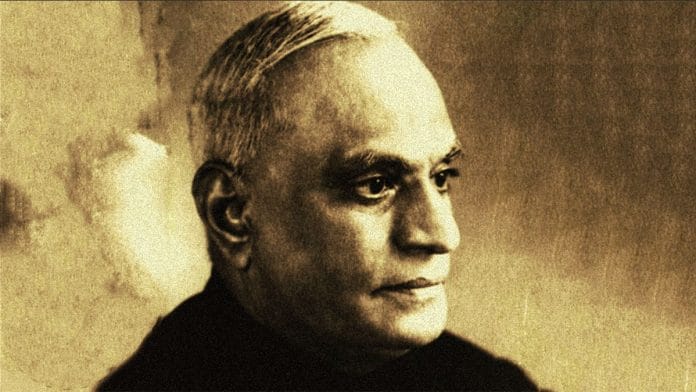New Delhi: Varahagiri Venkata Giri, more popularly known as V.V. Giri, was the only Independent candidate to have been elected to the post of the President so far.
During his tenure as President, Giri gave his assent to two revolutionary documents — the Shimla Agreement, a peace treaty signed between India and Pakistan, and the bank nationalisation Bill of 1969, which continues to shape the Indian economy even after five decades.
Prior to serving as the country’s fourth President, Giri served as the governor of three states — Uttar Pradesh (1957 -1960), Kerala (1960-1965) and Karnataka (1965–1967).
He also held the post of the president of All India Railwaymen’s Federation and president of All India Trade Union Congress. In 1975, he received the Bharat Ratna — India’s highest civilian award.
Life in Odisha
On 10 August 1894, Giri was born to a Telugu-speaking family in Berhampur, Odisha. His father V.V. Jogayapantulu, was a prominent lawyer, while mother Subhadramma actively participated in the freedom movement. This enabled Giri to get accustomed with politics at a very young age.
Giri’s younger sister, Adruti Laxmibai, also entered politics and went on to become the first woman deputy speaker of Odisha Assembly, writes Odisha Sun Times.
After attending Khallikote Autonomous College in his hometown, Giri went to Ireland to pursue law at University College Dublin.
According to The Irish Times, Giri frequented a café, Irish Farm Produce, which was known to be a hub of Irish nationalists. There Giri was believed to have befriended members from the Left-wing party, Sinn Féin, writes the newspaper. In 1916, he was asked to leave Ireland because of his affiliations with Sinn Féin.
In The Hindu’s interview of author Conor Mulvagh, who wrote a book on Giri’s life titled Irish Days, Indian Memories, the paper writes that Giri’s expulsion from Ireland was over “claims that he participated in the insurrection” — an armed rebellion led by Irish republicans against British rule.
Also read: Remembering WC Bonnerjee, the first president of Indian National Congress
Political career
On returning to India after having tasted revolution, Giri joined the Congress, rose in the party ranks and also became an active participant in the freedom movement. In 1920, he was put behind bars for protesting against the sale of liquor. After Independence, however, his political career saw an upswing.
He was made India’s first high commissioner to Sri Lanka. In the 1951 general elections, he contested as an Independent candidate from a constituency in the Madras state (which is now Tamil Nadu) and won. As the labour minister of Madras, he came up with the ‘Giri Approach’ that attempted to organise the labour sector through improved communication between management and workers.
From acting President to full-term President
After the death of former President Zakir Hussain in May 1969, Giri, who was the vice-president at that time, assumed the role of acting President.
During his three-month stint, he promulgated the infamous bank nationalisation ordinance backed by former PM Indira Gandhi’s administration. The ordinance nationalised 14 largest commercial banks in the country with deposits worth Rs 50 crore. The move drew sharp criticism not only from the opposition, but also from economists.
One of the fears was that “since the private banks were run by big industrialists, they…[would give] loans to themselves,” writes Bloomberg Quint.
The men behind the Bill — D.N. Ghosh (then deputy secretary, Banking Division, in the Finance Ministry), P.N. Haksar (then principal secretary to the PM) and A. Baksi (then chairperson of Industrial Finance Corporation of India) — were in a hurry and drafted it in just two days.
They knew it was “crucial to come up with the Banking Legislation by July 19 as VV Giri, who was Acting President of India at that time, was to demit office the next day, July 20, 1969, and the Lok Sabha was to resume its session on July 21. Talk about planning!”
The very next day on 20 July, Giri stepped down to contest as an Independent candidate in the next Presidential election.
According to The Wire, it was believed that Giri was propped up by Indira Gandhi during a time when the “old guard” in the Congress — the Syndicate — was planning to expel her. The Syndicate was unwilling to back Giri for President and wanted then Lok Sabha Speaker Neelam Sanjiva Reddy to occupy the post instead. When Giri eventually won, it secured Indira Gandhi’s leadership for two more years.
Giri entered the Rashtrapati Bhawan on 24 August 1969 and held office for a full term until 1974.
Also read: Rajendra Prasad, India’s first President, who was a ‘man amongst men’






